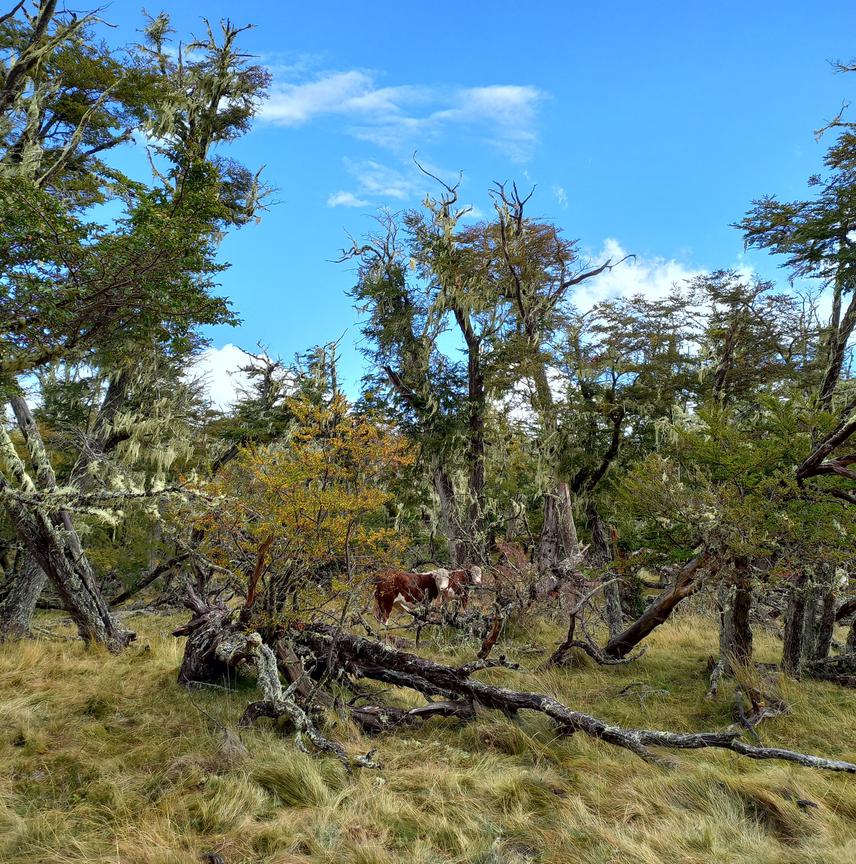Paula Rodríguez
At the End of the World, Tierra del Fuego's sub Antarctic forests are irreplaceable at the biome level. Yet, for more than 100 years these have been exposed to the presence of domestic herbivores. Nowadays, more than 70% of these forests is used for cattle raising. Are the current practices sustainable? Is forest regeneration compromised? This study aims to evaluate the response of beech forests to management practices that take place in cattle ranches from Tierra del Fuego, Argentina, in order to facilitate the transition of local rural communities towards more sustainable productive models.

Two Hereford cows at the Nothofagus forest. © Paula Rodríguez
Forests are key ecosystems considering the actual and projected climate change due to the ecosystem services they provide and the biodiversity they maintain. Here in Southern Patagonia, the forests have proven to be very vulnerable ecosystems. For example, the beech forests (Nothofagus sp.) in Tierra del Fuego, Argentina, are already under the impact of biological invasions such as the beaver and more recently an exotic plant called Hieracium. These have already changed the forest structure and function and compromised its regeneration. Forests occupy 733,907 hectares in Tierra del Fuego. From these, 12% is protected, i.e., as a National Park, yet 50% of these are under private domain, i.e., farmland. How are these forests being managed? Is their regeneration guaranteed? We don’t know.
I’m firstly interested in understanding the current management practices that take place in Tierra del Fuego. Secondly, in evaluating the response of Nothofagus forests to these management practices. By analysing the behaviour of environmental indicators in different situations of silvopastoral uses (gradient of intensity of use) I will assess the environmental sustainability at a ranch scale. I hope these set of indicators and their application serve as a tool for innovative management practices to protect and and/or restore Nothofagus forests.
Header: A Hereford cow grazing at a grassland. This picture was taken at the Viamonte Ranch. The Nothofagus forest can be seen at the background. © Paula Rodríguez.